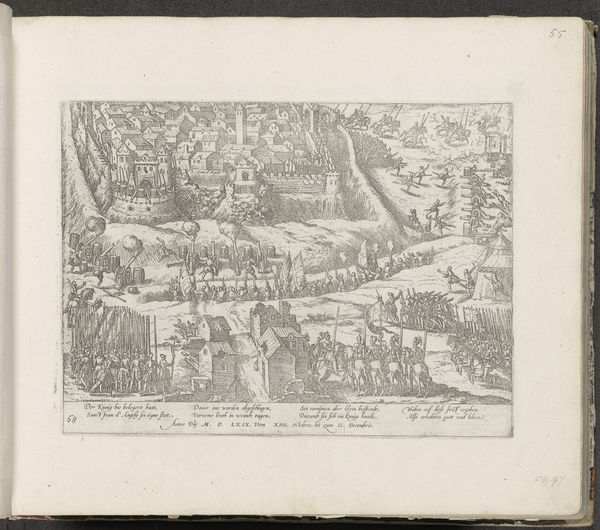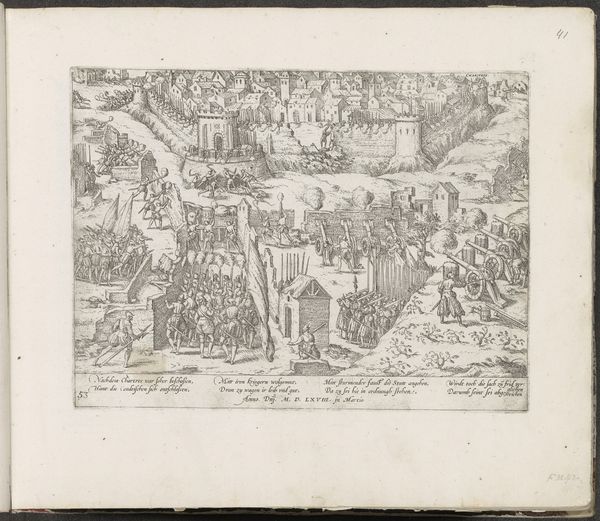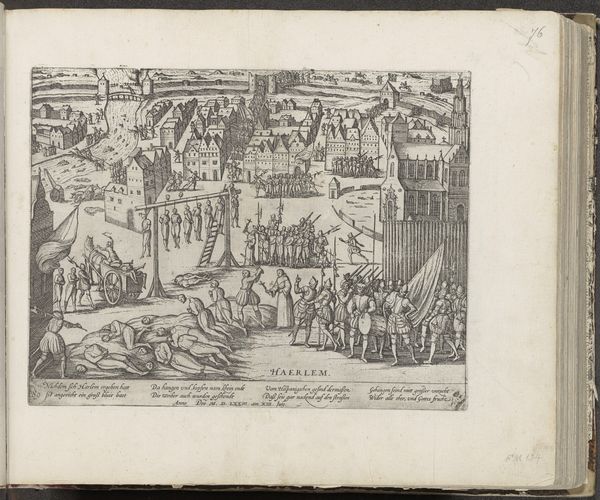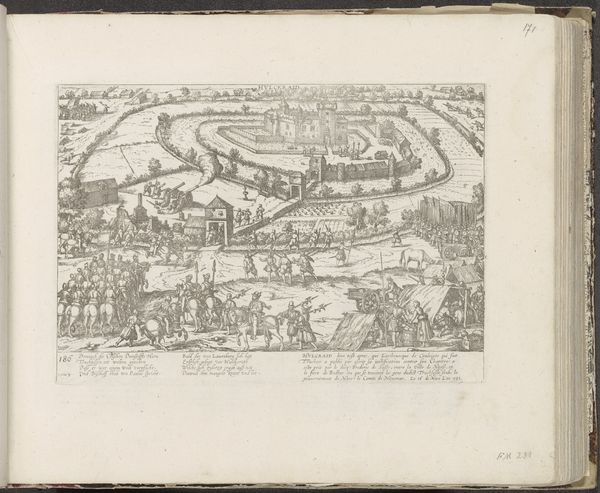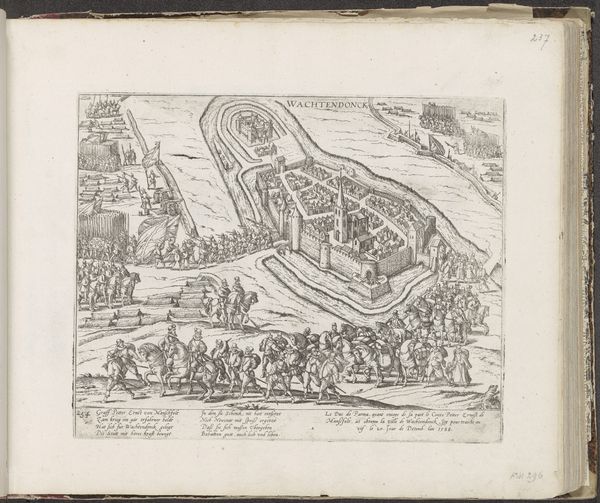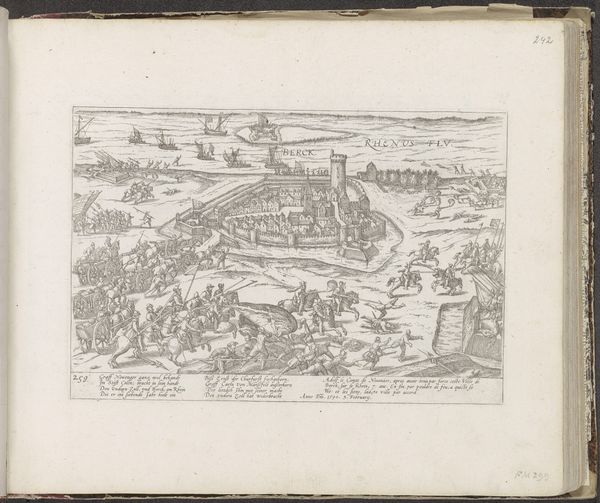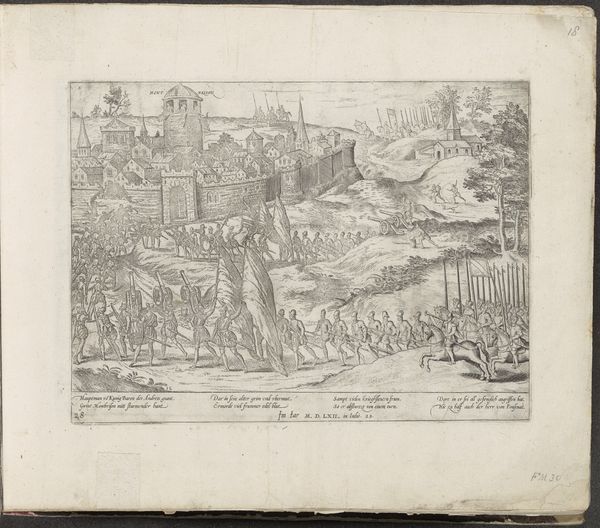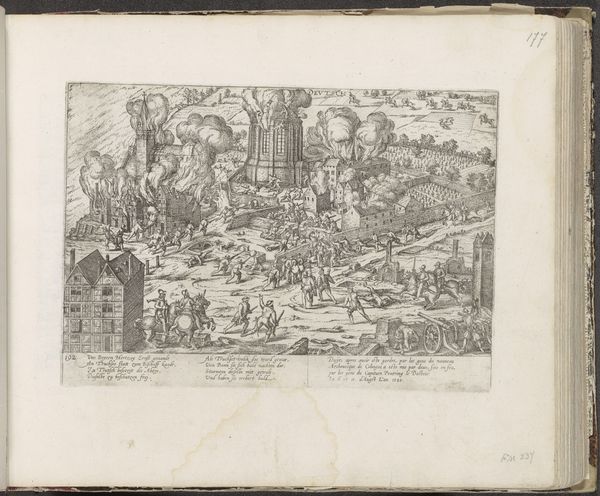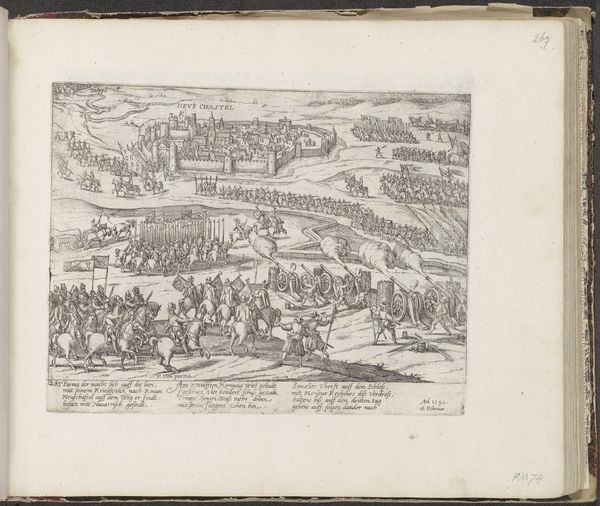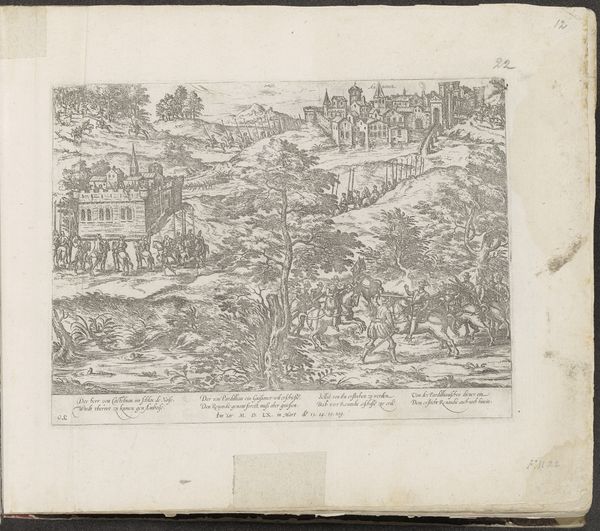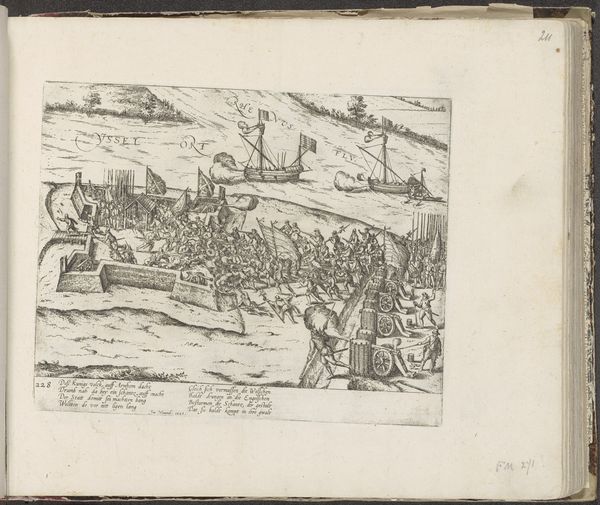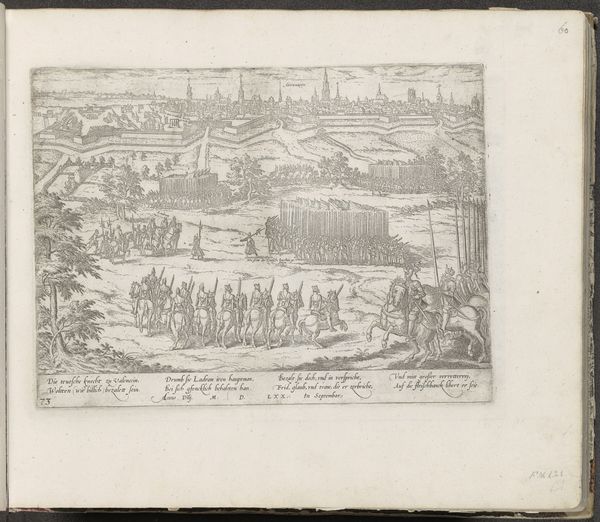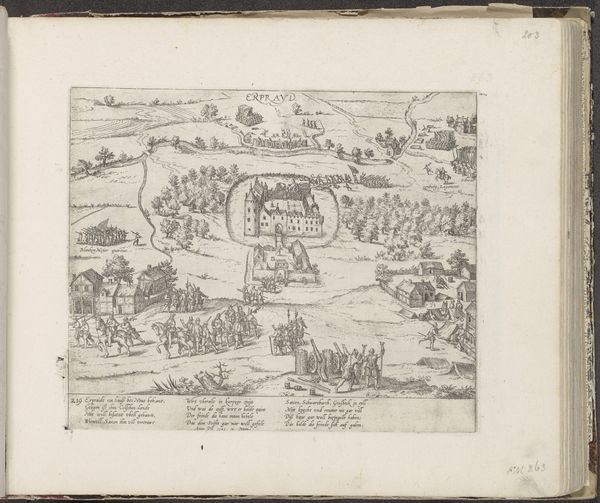
print, engraving
# print
#
cityscape
#
history-painting
#
engraving
Dimensions: height 199 mm, width 275 mm
Copyright: Rijks Museum: Open Domain
Curator: Here we have a print titled "Kasteel Westerlo veroverd door Mansfeld, 1583," dating from approximately 1587 to 1591. It's the work of Frans Hogenberg and currently resides in the Rijksmuseum. This image, created with engraving, depicts the conquest of Westerlo Castle. What strikes you upon seeing it? Editor: It has this unsettling, meticulously rendered feeling. Like a children's history book, yet illustrating intense turmoil. The stark, detailed lines amplify the starkness of the event itself. There is a tension between something beautiful and something rather traumatic. Curator: Precisely. The scene shows a moment in the Eighty Years' War, the siege and capture of Westerlo by Spanish forces under Count von Mansfeld. Look closely, and you'll see how Hogenberg uses visual language to establish clear victors and losers. Consider the detail given to the advancing army versus the defenders within the castle. Editor: Yes, the attacking soldiers, with their pikes and horses, occupy much of the lower portion of the print, conveying force. I wonder how the public at the time received such imagery. It feels propagandistic. Curator: Absolutely. Prints like these were essential news and propaganda of the time. It was how people visualised events at a distance, helping shape public opinion and cultural memory of such conflicts. The symbols, even seemingly small ones, communicate a story of power, dominance, and shifting alliances. Consider that imposing church tower in the background: Is it merely topographical, or a stand-in for other societal powers at stake? Editor: That tower definitely reads as a silent witness, observing the shift in power. It connects earthly conflicts with larger themes—faith, societal stability, or even the potential dismantling of the old order. Its inclusion anchors this local event in a broader spiritual struggle. Curator: Indeed. The details in Hogenberg’s engraving not only illustrate a historical event but also embed it with potent symbolic meanings, reflective of the anxieties and power dynamics of the time. Editor: It really causes one to reflect on the power of images in shaping collective understanding and experience of war, and it prompts me to think about how conflict, faith and political views can leave an enduring legacy over generations.
Comments
No comments
Be the first to comment and join the conversation on the ultimate creative platform.
